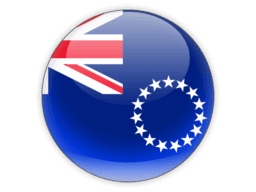
Regions of Cook Islands
Explore 11 regions
Cities of Cook Islands
Discover 1 cities across 1 regions
Rarotonga(1)
The Cook Islands is a self-governing territory located in the South Pacific Ocean, northeast of New Zealand. The islands are scattered over an area of 2.2 million square kilometers, but have a land area of only 236 square kilometers. The islands consist of 15 small islands and atolls, with the largest island being Rarotonga. The population of the Cook Islands is approximately 18,000, with the majority residing on Rarotonga.
The Cook Islands are known for their natural beauty, crystal-clear waters, and tropical climate. The islands offer a range of activities including snorkeling, diving, fishing, hiking, and cultural experiences. The traditional Polynesian culture is still evident in the daily life of the people, and visitors can experience traditional dance, music, and food.
The Cook Islands has a mixed economy with tourism, offshore banking, and agriculture being the main sources of income. The New Zealand dollar is the official currency, and English and Cook Islands Maori are the official languages.
The Cook Islands is a self-governing territory in free association with New Zealand. This means that the Cook Islands has its own government and is responsible for its own domestic affairs, but relies on New Zealand for defense and foreign affairs. The relationship between the Cook Islands and New Zealand is governed by the 2001 "Compact of Free Association," which provides for mutual cooperation and assistance between the two countries.
National holiday
Constitution Day, the first Monday in August (1965)
Telephone Code
682
Local Emergency Phone
Ambulance: 998; Fire: 996; Police: 999
Vaccinations
See WHO recommendations
Climate
Tropical oceanic; moderated by trade winds; a dry season (April to November) and a more humid season (December to March)
Currency (Code)
New Zealand dollars (NZD)
Electricity/Voltage/Plug Type(s)
240 V / 50 Hz / plug types(s): I
Major Languages
English 86.4%, Cook Islands Maori (Rarotongan) 76.2%, other 8.3%; note: shares sum to more than 100% because some respondents gave more than one answer on the census
Major Religions
Protestant 62.8%, Roman Catholic 17%, Mormon 4.4%
Potable Water
Opt for bottled water
International Driving Permit
A local license is required.
Road Driving Side
Left
Tourist Destinations
Tapuaetai (One Foot Island); Muri Beach; Titikaveka Beach; Te Vara Nui Village; cross-island hike to Te Rua Manga (The Needle); Aroa Marine Reserve
Major Sports
Netball, rugby, soccer
Cultural Practices
Swimwear should be confined to the beach and resort pool areas.
Tipping Guidelines
Don't feel that you need to leave a tip, unless you believe that you have received outstanding service.
Souvenirs
Pareu cloth and quilted items, woven hats and baskets, carved wooden instruments and decorative items, pearl and shell items, collectible coins and stamps
Traditional Cuisine
Ika Mata — freshly caught fish cooked in lemon juice and then combined with fresh coconut cream, onion, and chilis; typically served with a side salad
Geography
Area
total: 236 sq km
land: 236 sq km
water: 0 sq km
Climate
tropical oceanic; moderated by trade winds; a dry season from April to November and a more humid season from December to March
Natural resources
coconuts (copra)
People and Society
Population
7,939 (2023 est.)
Ethnic groups
Cook Island Maori (Polynesian) 81.3%, part Cook Island Maori 6.7%, other 11.9% (2011 est.)
Languages
English (official) 86.4%, Cook Islands Maori (Rarotongan) (official) 76.2%, other 8.3% (2011 est.)
Religions
Protestant 62.8% (Cook Islands Christian Church 49.1%, Seventh Day Adventist 7.9%, Assemblies of God 3.7%, Apostolic Church 2.1%), Roman Catholic 17%, Church of Jesus Christ 4.4%, other 8%, none 5.6%, no response 2.2% (2011 est.)
Population growth rate
-2.31% (2023 est.)
Government
Government type
parliamentary democracy
Capital
name: Avarua
Economy
Economic overview
high-income self-governing New Zealand territorial economy; tourism-based activity but diversifying; severely curtailed by COVID-19 pandemic; copra and tropical fruit exporter; recently received economic recovery support from Asian Development Bank
Real GDP (purchasing power parity)
$299.9 million (2016 est.)
Real GDP per capita
$16,700 (2016 est.)
Agricultural products
vegetables, coconuts, roots/tubers, cassava, papayas, tomatoes, pork, fruit, sweet potatoes, mangoes/guavas
Industries
fishing, fruit processing, tourism, clothing, handicrafts
Exports
$3.125 million (2011 est.)
Exports - partners
Japan 37%, Thailand 21%, France 17% (2019)
Exports - commodities
fish products, recreational boats, precious metal scraps, fruit juice, chemical analysis instruments (2019)
Imports
$109.3 million (2011 est.)
Imports - partners
New Zealand 41%, China 21%, Italy 12%, Fiji 10% (2019)
Imports - commodities
ships, refined petroleum, recreational boats, cars, flavored water (2019)
International Airports in Cook Islands
Discover 1 major airports serving Cook Islands
Mark Cook Islands as Visited
Add Cook Islands to your personal travel map and track your journey around the world. Share your adventures and see your progress grow!